 1984 Mitsubishi Galant V Dimensions, Size & Specs
1984 Mitsubishi Galant V Dimensions, Size & SpecsMeasurements of the 1984 Mitsubishi Galant V, engineered for optimal performance and comfort
| Dimensions | |
|---|---|
| Length: | 4560 mm179.5 in15.0 ft |
| Width: | 1695 mm66.7 in5.6 ft |
| Height: | 1395 mm54.9 in4.6 ft |
| Weight Specifications | |
| Curb Weight: | 1065 kg2348 lbs |
| Tire Specifications | |
| Rims Size: |
|
| Tire Sizes: |
|
The Mitsubishi Galant V, produced between 1984 and 1987, represents the fifth generation of the Mitsubishi Galant series, a mid-size sedan designed for a balance of comfort, efficiency, and practicality. This generation features a modest, aerodynamic design that was typical for mid-1980s automobiles, catering primarily to buyers looking for reliable and economical transportation. Measuring 4560 mm (179.5 inches) in length, 1695 mm (66.7 inches) in width, and 1395 mm (54.9 inches) in height, the Galant V offers a compact yet roomy profile suitable for urban and suburban driving environments. With a curb weight of 1065 kg (2349 lbs), this vehicle maintained a lightweight build, contributing to better fuel efficiency and nimble handling. The Galant V rides on 13-inch rims equipped with 165/80 SR13 or 165 SR13 tires, standard sizes at the time, ensuring a balance between ride comfort and road grip. As a sedan, it emphasized passenger comfort and practicality with a spacious interior relative to its external size. The Galant V thus stands out as a functional and efficient midsize sedan from the mid-1980s, making it a notable option for enthusiasts and collectors interested in classic Japanese sedans. Its dimensions and specifications highlight its compact yet practical nature, ideal for everyday driving during its production period.
Discover the standout features that make the 1984 Mitsubishi Galant V a leader in its class
Have a question? Please check our knowledgebase first.
The Mitsubishi Galant V, produced from 1984 to 1987, is a compact sedan with an overall length of 4560 mm (179.5 inches), a width of 1695 mm (66.7 inches), and a height of 1395 mm (54.9 inches). These dimensions reflect a relatively compact profile typical of mid-1980s sedans, designed to balance interior space and maneuverability. The car’s moderate width aids in urban driving and parking, while the length offers sufficient cabin room without compromising handling.
The Mitsubishi Galant V has a curb weight of approximately 1065 kg (2347 lbs). This relatively lightweight design for a sedan of its era contributes positively to its fuel efficiency and nimble handling characteristics. A lighter curb weight means the engine has less mass to move, which often results in better acceleration and lower fuel consumption. It also makes for more responsive steering and easier control, particularly in urban settings or on winding roads, enhancing the overall driving experience.
The Mitsubishi Galant V uses 13-inch rims paired with tire sizes 165/80 SR13 and 165 SR 13. These tires, with a narrow width and higher profile, contribute to a smoother, more comfortable ride by absorbing road irregularities effectively. Smaller rim sizes and higher aspect ratio tires generally provide better cushioning against bumps but might compromise cornering precision compared to modern low-profile tires. This setup suited the Galant's design focus on comfort and reliable daily driving.
Yes, the Mitsubishi Galant V fits comfortably into a standard residential garage. With its length of 4560 mm (179.5 inches) and width of 1695 mm (66.7 inches), it is smaller than many modern sedans and SUVs, which often exceed 4.8 meters in length and 2 meters in width. Typical garage dimensions, which are usually around 6 meters (19.7 feet) in length and 3 meters (9.8 feet) in width, provide ample space for the Galant V with room to spare for door opening and storage.
Compared to the Galant IV generation, the Galant V saw slight dimension adjustments focusing on a more modern and aerodynamic design. While exact predecessor dimensions vary, the Galant V is generally similar in length and width but benefits from a lower profile at 1395 mm (54.9 inches) height, enhancing its sporty appearance and stability. Weight reductions were also targeted to improve fuel economy and handling, making the V generation a more refined package overall.
The Mitsubishi Galant V's dimensions are quite competitive with other mid-1980s compact to mid-size sedans such as the Toyota Corolla, Honda Accord, and Nissan Bluebird. Its length of 4560 mm (179.5 inches) fits within the typical range for sedans of this category, while the width of 1695 mm (66.7 inches) is slightly narrower than some competitors, making it potentially easier to maneuver in tight spaces. The height of 1395 mm (54.9 inches) is lower than many contemporaries, granting it a sportier stance. Its lightweight design contrasts with some rivals that could be heavier, thus promoting better fuel economy and agility.
The Mitsubishi Galant V, configured as a sedan, typically offers seating for five occupants with a conventional two-row layout. While specific cabin dimensions are not provided, the vehicle's compact exterior footprint suggests a moderately spacious interior for its class and time. The vehicle’s width of 1695 mm (66.7 inches) supports comfortable shoulder room for front passengers and reasonable space in the rear. The low height (1395 mm or 54.9 inches) may slightly reduce headroom, but the design prioritizes an ergonomic driving position and sufficient passenger comfort for daily use.
The Mitsubishi Galant V, with its curb weight of 1065 kg (2347 lbs) and compact size, typically delivers respectable fuel efficiency for its era, especially with smaller displacement engines common in this generation. Its lightweight design helps achieve better mileage and responsive handling. The suspension and chassis tuning from this period focus on balancing comfort and driver engagement, making the Galant V a practical yet enjoyable sedan for daily driving, particularly suited for urban and suburban environments.
The Mitsubishi Galant V generation (1984-1987) featured several design and technological improvements over earlier models. These included a more aerodynamic body shape, reflecting the industry trend of improving fuel economy and reducing wind noise. The reduced height and sleeker profile contributed to this aerodynamic efficiency. Technological enhancements often involved improved suspension components, more efficient engines, and updated interior amenities, which aimed to enhance driver comfort and vehicle reliability. This generation was also part of Mitsubishi's efforts to modernize their lineup during the mid-80s.
While the Mitsubishi Galant V offers a compact size, lightweight design, and good maneuverability, its age means it lacks modern safety features like airbags, ABS, and advanced crash structures. The narrow 13-inch tires (165/80 SR13) may not provide the same grip or ride quality expected today. Availability of parts and maintenance expertise can be a challenge, and fuel efficiency, while good for its time, may not meet the standards of contemporary vehicles. Interior space and comfort, though adequate for the 1980s, might feel limited compared to modern sedans that have benefited from over three decades of ergonomic and technological advances.
Discover similar sized cars.
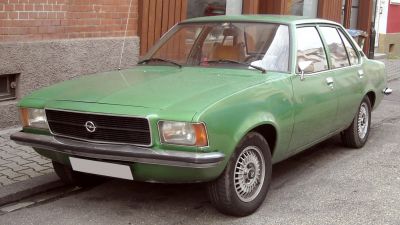
| Production: | 1972-1977 |
|---|---|
| Model Year: | 1972 |
| Length: | 4567 mm179.8 in |
| Width: | 1718 mm67.6 in |
| Height: | 1415 mm55.7 in |
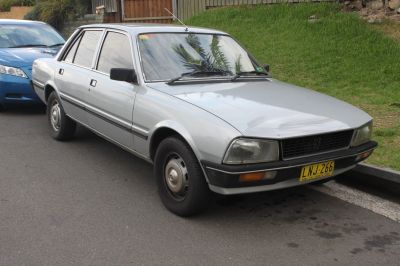
| Production: | 1979-1993 |
|---|---|
| Model Year: | 1979 |
| Length: | 4580 mm180.3 in |
| Width: | 1735 mm68.3 in |
| Height: | 1440 mm56.7 in |
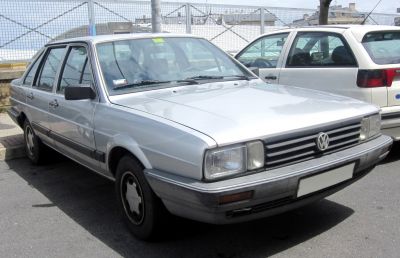
| Production: | 1981-1988 |
|---|---|
| Model Year: | 1981 |
| Length: | 4545 mm178.9 in |
| Width: | 1695 mm66.7 in |
| Height: | 1400 mm55.1 in |
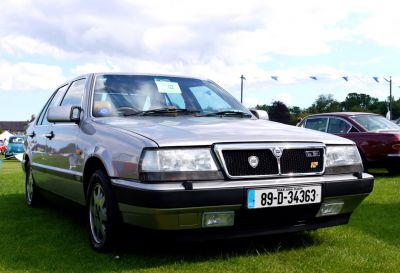
| Production: | 1984-1994 |
|---|---|
| Model Year: | 1984 |
| Length: | 4590 mm180.7 in |
| Width: | 1750 mm68.9 in |
| Height: | 1435 mm56.5 in |

| Production: | 1986-1994 |
|---|---|
| Model Year: | 1986 |
| Length: | 4495 mm177.0 in |
| Width: | 1670 mm65.7 in |
| Height: | 1365 mm53.7 in |
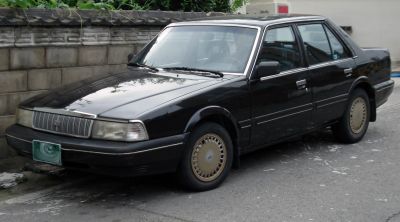
| Production: | 1987-1995 |
|---|---|
| Model Year: | 1987 |
| Length: | 4570 mm179.9 in |
| Width: | 1720 mm67.7 in |
| Height: | 1405 mm55.3 in |

| Production: | 1989-2002 |
|---|---|
| Model Year: | 1987 |
| Length: | 4515-4595 mm177.8-180.9 in |
| Width: | 1695 mm66.7 in |
| Height: | 1395-1440 mm54.9-56.7 in |
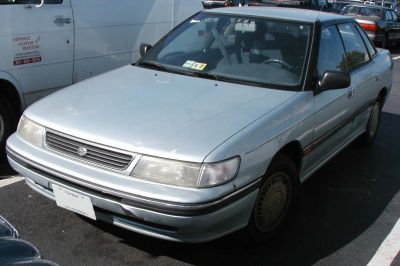
| Production: | 1991-1994 |
|---|---|
| Model Year: | 1991 |
| Length: | 4545 mm178.9 in |
| Width: | 1690 mm66.5 in |
| Height: | 1380-1400 mm54.3-55.1 in |
